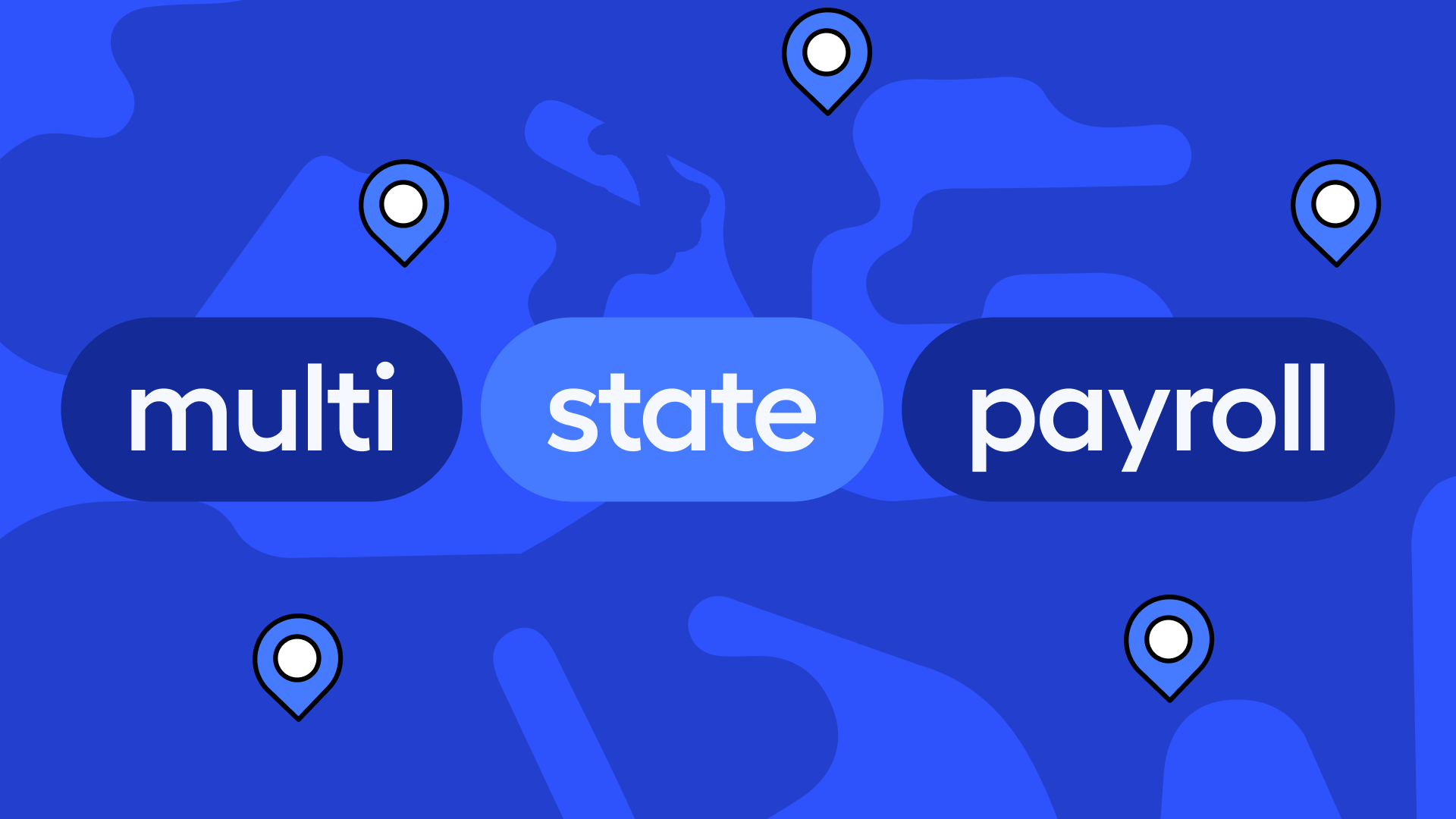Company growth is an exciting journey, but let’s be honest – it can bring some payroll headaches along the way.
Expanding to new states means dealing with multi-state payroll, and going global means diving into complex tax codes and benefit systems across different countries. Admin tasks pile up, mistakes happen, costs creep in.
But fret not! We’ve got you covered with this ultimate guide for managing both multi-state and multi-country payroll.
Discover best practices and a game-changing tool to streamline compliance and scale with ease. Let’s turn those payroll challenges into opportunities for success!
Understanding Multi-State Payroll
When a company employs team members across several states, they must establish a multi-state payroll system. This means that wages are paid appropriately, taxes are reported correctly and benefits are administered in the proper way.
Multi-state payroll applies if:
- Your business operates in multiple states
- One of your employees works in more than one state
- One of your employees travels between states
- One of your employees lives in one state and works in another
To pay multi-state employees appropriately, you must follow federal, state, and local wage and hour laws. This can often lead to reporting challenges as rules and regulations may vary significantly between different jurisdictions.
Ensuring tax compliance can be equally complex since you need to understand the tax codes in each state where your employees reside or work as well as determining which deductions, credits, and exemptions apply.
Understanding Multi-Country Payroll
Multi-country payroll, also known as global payroll, is used for companies that have teams distributed across the world. It involves the calculation and distribution of wages, taxes, and benefits on a global scale and should ensure that employees in different locations are paid accurately and in accordance with local laws.
Where multi-country payroll differs from multi-state payroll is that payroll administrators must be aware of the tax codes, labor laws, and social benefit schemes in each country where employees are based. Currency conversion will also be involved.
These two factors present new challenges. What’s equally complex is that these laws can change fairly frequently and currencies fluctuate daily.
Growing team? Multiplier streamlines both multi-state and multi-country payroll
Multi-State Payroll Processing
Managing multi-state payroll is complicated and it’s always best to outsource to an expert. In this section, however, we look at the key things you need to remember.
Best Practices for Multi-State Payroll Processing
- Check each state’s Department of Revenue to understand specific tax regulations including the amount to be withheld, collected, and contributed by employers. For example, you can find Florida’s online here.
- Consider state taxes including State Unemployment Tax (SUTA), income tax, disability fund tax, and workers compensation tax.
- Understand reciprocal agreements between states. These ensure that employees who live and work in different states aren’t subject to double tax withholding.
- Understand when a tax nexus, a threshold that determines at which point an out-of-state business must register and pay state taxes, applies. Typically this is when there is a physical presence in the state and it will mean that an employer may need to withhold state income tax even if the employee doesn’t work there.
- Understand the “Convenience of the employer” rule. This means that remote employees located in a different state are subject to the payroll tax laws of their employer’s state.
How To Streamline The Process Of Managing Multi-State Payroll
If you don’t use a service provider, you can follow these steps to manage your multi-state payroll more easily:
- Use a payroll software solution to calculate and withhold taxes. Ideally, this should be one with a self-service function where employees can update their own location details.
- Create a master schedule so you can stay up to date on state laws and make all payroll tax deposits on time. This should include whether filings are monthly, annually, or quarterly in each state.
- Regularly update this depending on employee location moves, changes to remittance and filing requirements, and regulatory changes.
- Conduct regular audits of your payroll data to ensure that everything aligns with state requirements.
Best Practices for Multi-Country Payroll Management
According to Ceridian’s “Future of Payroll” survey, “changing business and employee expectations will spur a payroll revolution.” Remote working means a new approach is necessary and when managing global payroll, you need to consider the following in order to maintain compliance, efficiency, and employee satisfaction:
- Create a calendar to track important deadlines related to payroll processing, payouts, reporting
- Continuously monitor changes in labor and tax laws across the countries in which you operate
- Create standardized policies for expense reimbursement and payroll audits to reduce admin time
- Implement a global payroll system that can standardize processes, calculate tax and ensure compliance across borders
Scaling Your Company With The Right Multi-State Payroll Provider
With Multiplier’s EOR and payroll solution, you can embrace borderless, flexible hiring. We keep up to date on local tax laws so that you can pay your international employees in their local currencies in minutes… all from a single dashboard.
FAQs About Multi-State Payroll
1. What are the tax implications of multi-state payroll processing?
The tax implications of multi-state payroll processing include dealing with varying state tax rates, regulations, and compliance requirements. Employers may need to withhold state income taxes and report to multiple state tax agencies. They also need to understand each state’s rules for payroll tax deductions.
2. How can I ensure compliance when managing payroll in multiple countries?
To ensure compliance when managing payroll in multiple countries, it’s crucial to stay informed about each country’s tax laws, employment regulations, and documentation requirements. You can also work with global payroll providers such as Multiplier to navigate these complexities.
3. What is the role of technology in multi-state and multi-country payroll processing?
Platforms such as Multiplier play a vital role in multi-state and multi-country payroll processing by automating calculations, ensuring accuracy with the latest laws, and centralizing key data. They also make it easier to pay employees in different countries by covering payments in different currencies. All of this saves time and costs and reduces error.







